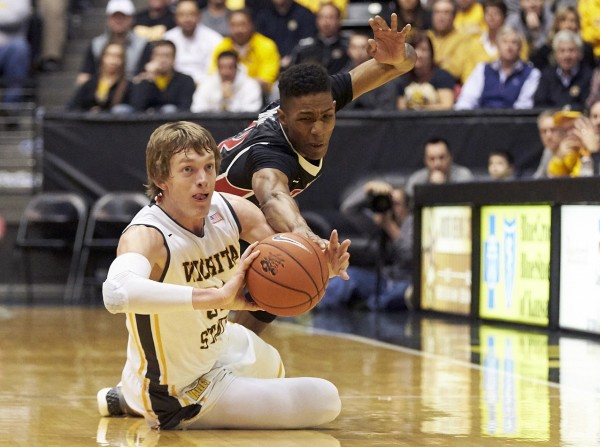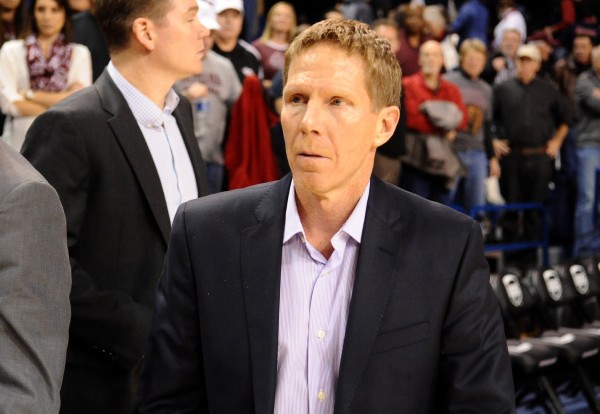In a Season of Parity, the High Mids are Struggling…
Posted by Andy Gripshover on December 11th, 2015A common thread as we move into the second month of college basketball has been that many of the top non-power conference schools not playing up to the gold standard they’ve set for themselves in recent years. While there are key differences among the following five teams, there are also some striking similarities as to why they have not been nearly as good as we’ve come to expect for these programs. Let’s first dig into the their status.

Wichita State and the Other Gold Standard Non-Power Conference Programs Are Struggling (USA Today Images)
- Gonzaga – The four year starting backcourt of Kevin Pangos and Gary Bell is gone and big man Przemek Karnowski is hurt. The Zags are 6-2 but fell in the semifinals of the Battle 4 Atlantis – an event they were favored to win – to Texas A&M and before blowing a 10-point halftime lead last Saturday to Arizona to lose for just the 13th time in the history of the (new) Kennel. They almost lost for the 14th time on Tuesday to Montana in what would have been arguably the biggest upset in the history of the building, but scored the final five points to survive.
- Wichita State – The Shockers have been the best program outside of a power conference over the past three seasons; winning 30 games in each season and including a Final Four appearance and a 35-0 start. They are just 4-4 this season, however, and went winless in Orlando over Thanksgiving weekend.
- San Diego State – The Aztecs are back-to-back Mountain West regular season champs, having won at least one game in four of the six straight NCAA Tournaments they’ve made, but have already taken losses to Arkansas-Pine Bluff and low-major city rival San Diego and sit at 7-4.
- VCU – The Rams differ from the rest of this group in one key way: they have a new coach in Will Wade. VCU is 5-3 to start his tenure in Richmond.
- Harvard – Five consecutive Ivy League championships, four straight NCAA Tournament appearances… and now just 3-6? Northeastern, UMass, Boston College and Holy Cross have relegated the Crimson to the fifth-best team in their own state.
So what are the common threads here? The main one is that they’re each struggling mightily on offense in some way or another. The Zags missed 12 of their final 13 shots in the Arizona loss, missed 7 of their 11 free throws in the Atlantis loss to the Aggies, and missed 11 of their 15 three point attempts while barely surviving Montana. On top of that, they’re 283rd out of 351 teams in turnover percentage, giving the ball away on almost 21 percent of their possessions. The Crimson are even more careless with the ball, rating 333rd in turnover percentage (22.8%) and their paltry 59.7% free throw percentage is worse than all but 10 Division I teams. The Shockers are 309th in the country in effective field goal percentage at 43.9 percent, making just 28.8 percent of their 3s (307th) and 44.3 percent of their twos (276th.) The Rams are even worse from inside the arc, ranking 283rd and connecting on just 43.9 percent from inside the arc. And the Aztecs, who have struggled mightily on offense even in their best years, combine the worst of both worlds with sub-200 rankings in effective field goal percentage (222nd, 47.4%) and turnover percentage (292nd, 21%)
The other key similarity is each school’s lost several of its best players from its recent runs of excellence, perhaps proving that personnel losses hit a bit harder on this section of the Division I ladder. The losses of Pangos/Bell and Van Vleet are obviously hurting the Zags and Shockers. Gonzaga’s new guards have been their biggest problem and Wichita simply didn’t look the same in Orlando without its floor leader, nor did they in a 10-point loss at Tulsa a week before that. San Diego State’s lone significant contributor from the past five years is Winston Shepard, having lost stars like Jamaal Franklin, Chase Tapley, Xavier Thames and a guy named Kawhi during that time. The Rams lost seniors Treveon Graham and Briante Weber, their linchpins on offense and defense respectively over the past four years and the Crimson no longer have their “big three” of Wesley Saunders, Steve Moundou-Missi and Siyani Chambers who starred on each of their last three Ivy champs and NCAA Tournament teams.
These schools have each had the best seasons in their respective histories over the past five years and it goes without saying that the primary requirement for those is some of the best players that have ever stepped on campus. Unlike true power conference programs, these schools cannot reload as easily through recruiting due to their smaller stature and relative lack of resources. Even Gonzaga, who has recruited at an elite national level for several years, struggles to withstand the loss of two four-year starters at guard despite returning arguably the best frontcourt in the country. This also means these teams typically have less depth in talent than power conference programs, making the superstars who lead them even more important to the team. This is particularly true on offense, which requires more skill from the star players, as opposed to defense, which typically requires focus and cohesive effort from the group as a whole. It’s not a coincidence that each of these non-power conference programs has lost or graduated its best players from their high water marks in program history and have now seen significant dropoffs in offensive performance and overall team quality. The variance of these dropoffs jives with the variance in the size of their programs — Gonzaga is practically a power conference program and is still 6-2 while Harvard is a true mid-major that’s most accurately described as a low major, and they’re 3-6 — but each has clearly fallen from its lofty perches of the past five years and for markedly similar reasons.










































